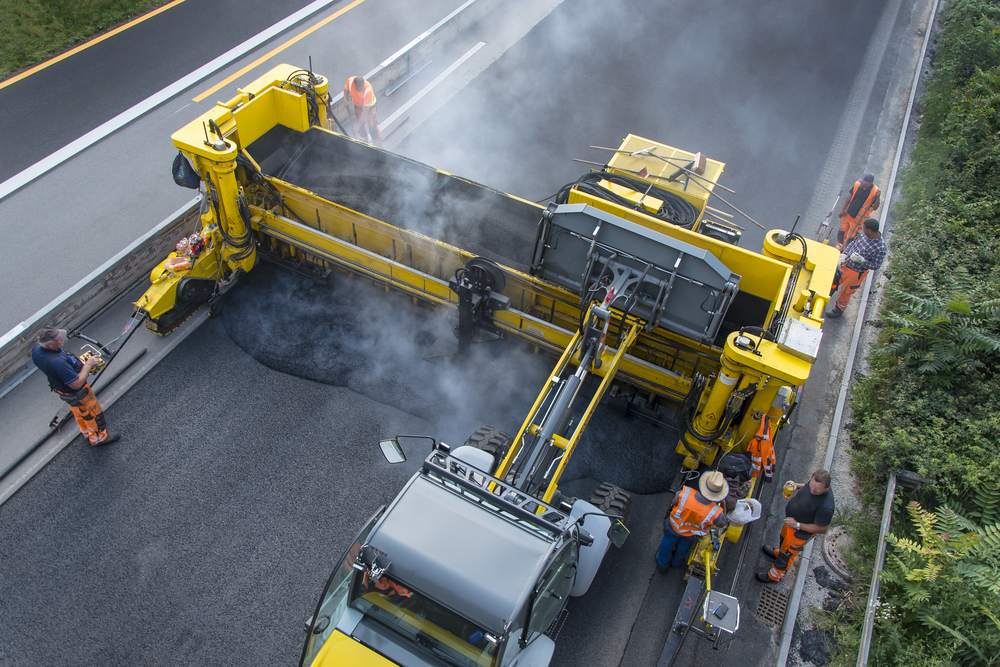7 Easy Facts About A1 Professional Asphalt & Sealing Llc Explained
7 Easy Facts About A1 Professional Asphalt & Sealing Llc Explained
Blog Article
A1 Professional Asphalt & Sealing Llc Things To Know Before You Buy
Table of ContentsAll about A1 Professional Asphalt & Sealing LlcAbout A1 Professional Asphalt & Sealing Llc8 Easy Facts About A1 Professional Asphalt & Sealing Llc DescribedA1 Professional Asphalt & Sealing Llc - The FactsA1 Professional Asphalt & Sealing Llc - An Overview

The oil in a vehicle engine is not just oil. The REOB includes all the additives that were in the waste oil as well as the wear steels from the engine (primarily iron and copper).
By making lots of blends using different REOB examples and different asphalt binders, the variations largely can be balanced out. Several States supplied examples of recognized REOB make-up to TFHRC scientists, that evaluated the examples to compare the percent of included (recognized) REOB to the found (examined) amount. The evaluations revealed a comparable percent of included and located REOB.
A1 Professional Asphalt & Sealing Llc Things To Know Before You Get This
None of those States realized that the asphalt they were buying included REOB. One State urged its samples had no REOB - https://www.quora.com/profile/John-Tally-19.
Of the 1,532 samples checked, 12 percent included REOB, and some included appreciably high levels of it at 1020 percent. The highest degree was 34 percent in a sample from Texas, which TxDOT had actually made use of in a patching compound. This testing also exposed the presence of phosphoric acid in 11 percent of the examples, and 2 percent contained ground tire rubber.
2 years ago at TRB's annual conference, the Federal scientists held an REOB workshop and provided the findings of their laboratory evaluations to a standing room-only crowd. Some agencies do not particularly ban REOB, they do impose physical tests that avert its useeffectively a ban. Others do not ban it by specification, yet have contracts with asphalt suppliers to avoid the use of REOB
Some Known Questions About A1 Professional Asphalt & Sealing Llc.
A handful do permit REOB, some within certain restrictions. For instance, Ohio and Texas limitation degrees to less than 5 percent of the asphalt. To create a trusted examination technique that all States can make use of, the TFHRC researchers established a round-robin test strategy. The individuals are 11 State highway agencies (Illinois, Massachusetts, Minnesota, Mississippi, Montana, North Carolina, Oklahoma, South Carolina, Texas, Vermont, and Wyoming), 2 independent screening laboratories, the Ministry of Transportation in Ontario, Queen's University in Ontario, and an Ontario paving contractor.
The individuals are checking the samples individually making use of the guidelines provided by the TFHRC scientists. The result will certainly be a suggested AASHTO test approach that any kind of State can adopt and use.
The sidewalk with REOB, which lies 0.6 mile (1 kilometer) from the pavement without REOB, has similar subgrade, website traffic thickness, and climate. The sector of Highway655 with 5 to 10 percent REOB showed significant cracking. In this example, the existence of REOB was the recognized source of cracking at a reduced temperature levels.
An area of examination pavement in Minnesota (MN1-4) discovered to include REOB also fractured too soon. The pavement performed well for the first 3 to 4 years, however then started to split.
An Unbiased View of A1 Professional Asphalt & Sealing Llc
The tests were not extensive, yet they showed that at levels of 6 percent or even more, the tensile toughness of the asphalt went down significantly. At a degree of 3.5 percent REOB, the variant in the physical examination approaches was higher than the result of REOB. It was hard for researchers to analyze whether REOB was existing. https://truthful-heron-jjppp1.mystrikingly.com/blog/a1-professional-asphalt-repairs-paving-excellence-in-st-louis.

One binder criterion thought about is the difference between the reduced temperature level essential spec temperature level for rigidity (S) in the flexing light beam rheometer and the bending beam rheometer creep incline (m-value) noted as Tcritical. Two independent research groups, one from AASHTO and the various other from the Asphalt Institute, concluded that even more research study is needed on the use of REOB in asphalt.
Formerly, all asphalt testing gauged design residential or commercial properties such as stiffness. These examinations do disappoint what materials had actually been included in the asphalt. One sample received throughout the TFHRC research had an extremely weird analysis. The sample had the adhering to test results: Superpave PG 64-28 with a heat quality of 67.3 Tcritical on the bending beam of light rheometer was 6.7 levels Celsius.

Excitement About A1 Professional Asphalt & Sealing Llc
These outcomes demonstrate there are weaknesses in the standardized design testing methods that might be made use of. The manufacturer might have an economic advantage and the product passes all the standard tests, but the item may you can try here not be advantageous to guaranteeing long-term performance. To address this issue and the development of brand-new asphalt additives and extenders, TFHRC is starting a research study program to use handheld spectroscopic tools, x-ray fluorescence spectroscopy, and Fourier change infrared spectroscopy to allow analyses to be done in the area instead than having to take examples back to the lab.
Report this page